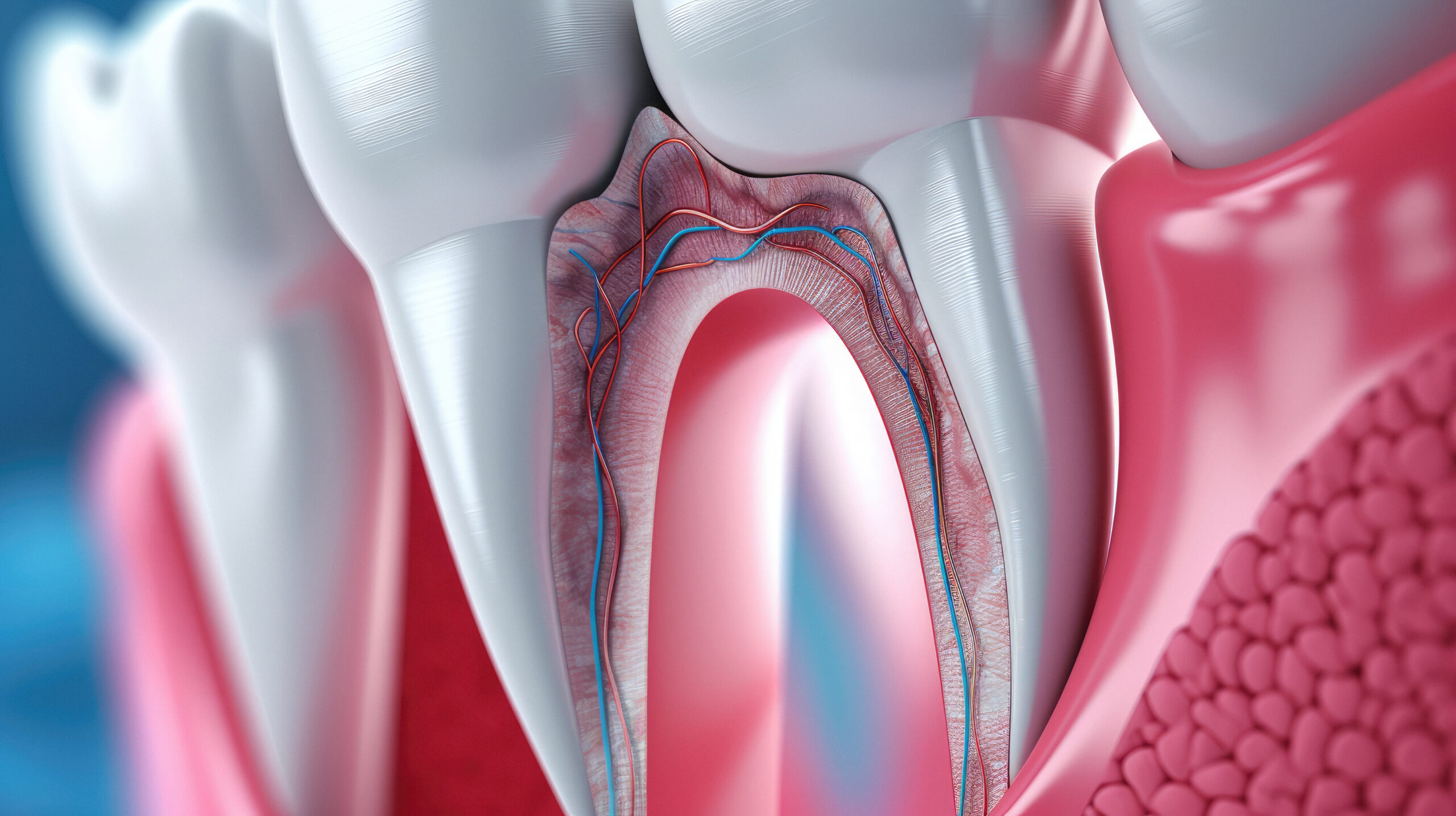
When you hear the words “root canal,” a wave of dread might wash over you. For many, the thought of a root canal brings to mind images of intense pain and a lengthy recovery. However, modern endodontic treatment, specifically root canal therapy, is designed to relieve pain, restore function, and ultimately save your tooth. Understanding the art of endodontics—how it works, why it’s necessary, and what you can expect during the process—can help alleviate your fears and empower you to take control of your oral health.
In this blog post, we’ll delve into the science and practice of endodontics, specifically focusing on root canal therapy, to explain why this procedure is often the best option for preserving a tooth that might otherwise need to be extracted.
What Is Endodontics?
Endodontics is a specialized branch of dentistry focused on diagnosing and treating issues related to the pulp—the soft tissue inside your tooth. This area contains nerves, blood vessels, and connective tissue, and it plays a crucial role in the development and health of the tooth.
When the pulp becomes infected or damaged due to deep decay, trauma, or repeated dental procedures, it can cause severe pain, sensitivity, and even lead to abscesses if left untreated. Endodontic treatment aims to address these issues by removing the damaged pulp, cleaning and disinfecting the inside of the tooth, and then sealing it to prevent further infection.
Root canal therapy is the most well-known and commonly performed procedure in endodontics. It’s designed to save a tooth that is otherwise in danger of being lost due to infection or damage to the pulp.
Why Is a Root Canal Necessary?
A root canal becomes necessary when the pulp, or soft tissue inside the tooth, becomes inflamed or infected. This can happen for a variety of reasons:
- Deep Decay: Cavities that penetrate deep into the tooth can allow bacteria to reach the pulp, leading to infection.
- Trauma: A blow to the mouth, even one that doesn’t visibly crack or break the tooth, can damage the pulp.
- Repeated Dental Procedures: Multiple fillings or other dental treatments can irritate the pulp, leading to inflammation or infection.
- Cracked or Broken Teeth: When a tooth cracks, bacteria can enter, causing an infection in the pulp.
When the pulp becomes infected, it can lead to severe pain, swelling, and an abscess (a pus-filled pocket). If left untreated, the infection can spread to the bone and surrounding tissues, potentially causing permanent damage. The primary goal of root canal therapy is to remove the infected pulp, prevent the spread of infection, and restore the tooth’s function, saving it from extraction.
The Root Canal Procedure: Step by Step
While the thought of a root canal may seem intimidating, the procedure itself is relatively straightforward and is typically performed under local anesthesia, so you won’t feel any pain during the process. Below is a breakdown of the steps involved in root canal therapy:
- Initial Examination and X-rays: Before beginning the procedure, your endodontist or dentist will conduct a thorough examination of your tooth. This often includes taking X-rays to assess the extent of the damage and to understand the shape of the root canals inside the tooth.
- Local Anesthesia: To ensure you are comfortable, the area around the affected tooth will be numbed with a local anesthetic. This ensures that you won’t feel pain during the procedure.
- Access Opening: The dentist will create a small opening in the crown (top) of the tooth to gain access to the pulp chamber and the root canals.
- Cleaning and Shaping the Canals: Once the pulp is exposed, the dentist will carefully remove the infected or damaged pulp tissue. The root canals will then be cleaned, shaped, and disinfected to remove any remaining bacteria and prevent further infection.
- Filling the Canals: After the canals are cleaned and dried, they will be filled with a rubber-like material called gutta-percha. This helps seal the canals and prevent bacteria from re-entering the tooth.
- Sealing the Tooth: After the root canals are filled, the access opening will be sealed with a temporary or permanent filling. In most cases, a crown will be placed on top of the tooth in a follow-up appointment to restore its strength and function.
- Final Restoration (Crown Placement): After the root canal is completed and the tooth has healed, a crown may be placed to protect and strengthen the tooth. This step is particularly important for back teeth (molars), which endure heavy chewing forces.
Modern Endodontics: Minimizing Pain and Maximizing Success
One of the biggest misconceptions about root canal therapy is that it is an excruciatingly painful procedure. In reality, advancements in technology, anesthesia, and techniques have made root canals a much more comfortable and predictable treatment option than ever before.
Here’s how modern endodontics helps minimize discomfort and improve outcomes:
- Advanced Imaging: Digital X-rays and 3D imaging technologies allow endodontists to get a detailed view of the tooth’s internal structures. This allows for more precise treatment, reducing the risk of complications.
- Better Anesthetics: Local anesthesia is highly effective today, and your endodontist will ensure that the area is fully numb before starting the procedure. For patients with dental anxiety, sedation options are also available to help relax during the treatment.
- Specialized Tools: Root canal instruments have become more advanced, allowing endodontists to clean and shape the canals more efficiently. This reduces the time spent on the procedure and minimizes discomfort.
- Post-Treatment Care: Most patients report only mild discomfort or sensitivity for a few days following the procedure. Over-the-counter pain relievers typically help manage any post-treatment discomfort. In fact, root canal therapy often relieves the intense pain caused by an infection, leading to a significant improvement in overall comfort.
The Benefits of Root Canal Therapy
There are many advantages to opting for a root canal instead of extracting a damaged or infected tooth. Here are a few of the primary benefits:
- Tooth Preservation: The primary benefit of a root canal is that it can save your natural tooth. A tooth that has undergone a root canal can last for many years, even a lifetime, with proper care. This preserves your ability to chew, speak, and smile naturally.
- Avoiding Extraction: Tooth extraction may be necessary in severe cases of infection, but losing a tooth can lead to a range of issues, such as shifting teeth, bone loss, and difficulty chewing. A root canal provides a way to avoid these consequences.
- Restoring Function: After a successful root canal, the tooth can be restored with a crown, ensuring it functions normally and blends seamlessly with your natural teeth.
- Pain Relief: One of the most immediate benefits of a root canal is the relief from pain caused by infection or inflammation of the pulp. Many patients report significant improvement in their symptoms after the procedure.
Myths About Root Canals
Despite the advances in endodontic care, there are still several myths and misconceptions about root canals that can make patients hesitant to undergo the procedure. Let’s dispel some of the most common myths:
- Myth: Root canals are extremely painful.
- Fact: Thanks to local anesthesia and modern techniques, root canals are generally no more painful than a regular filling. In fact, they often relieve the severe pain caused by an infected pulp.
- Myth: Root canals are time-consuming and require multiple appointments.
- Fact: In most cases, root canals can be completed in a single visit, though the exact number of visits will depend on the complexity of the case.
- Myth: Root canals cause illness.
- Fact: There is no scientific evidence to support the idea that root canals lead to systemic illnesses. When performed properly, root canal therapy is a safe and effective procedure.
- Myth: Root canals are unnecessary if the tooth doesn’t hurt.
- Fact: A tooth can still be infected even if there is no pain. If left untreated, an infection can spread and lead to serious complications, including tooth loss.
Conclusion
Endodontics, and specifically root canal therapy, plays a vital role in preserving the health of your teeth and gums. While the procedure has historically been feared due to misunderstandings and outdated perceptions, modern techniques and technology have made root canals a routine, effective treatment that saves millions of teeth each year.
If your dentist recommends a root canal, don’t panic. Instead, understand that this procedure is designed to alleviate pain, prevent the spread of infection, and help you maintain your natural smile for years to come. By choosing root canal therapy, you’re opting for the preservation of your tooth and the restoration of your oral health. So, embrace the art of endodontics—your smile will thank you for it!




